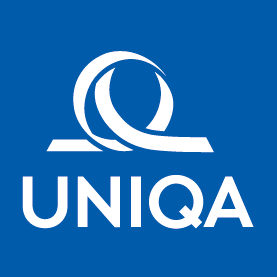Strategy: Think clearly and be ambitious.
UNIQA 2.0 strategy 2011–2020
The current structural conditions pose major challenges as well as attractive opportunities for insurance companies. In particular, the sustained period of low interest rates and changes in customer needs in the digital age are putting significant pressures on the traditional business model. Against this background, UNIQA launched an ambitious strategic programme in 2011 entitled “UNIQA 2.0” and featuring multiple stages. A house – the UNIQA House – was developed as a memorable image for the programme’s objectives and strategic actions (as already mentioned in the letter from CEO Andreas Brandstetter).
Specific objectives, …
UNIQA is already at the third stage of the strategic programme, which is running from 2016 until 2020. The objectives for this third stage were adapted in the first quarter of 2016 and presented to the public:
1. Growth: UNIQA expects average growth of around 2 per cent per annum in premiums written for the period until 2020. While expectations for premium growth in life insurance in Austria are muted, UNIQA expects average growth of just under 3 per cent p. a. in health insurance and of approximately 4 per cent p.a. in property and casualty insurance for the period stated.
2. Cost ratio: The aim is to improve efficiency and the cost structure on a continuous basis. Although the investment programme launched in 2016 of around €500 million over ten years will lead to an increase in the cost ratio in the medium term, UNIQA does expect an overall cost ratio of under 24 per cent from 2020 as a result of these investments.1)
3. Combined ratio: The combined ratio in property and casualty insurance is the most important key figure for UNIQA in terms of profitability in the core underwriting business. The objective of bringing the combined ratio below 95 per cent on a sustainable basis by 2020 is therefore a high priority.
4. Economic capital ratio (ECR ratio): UNIQA is striving to achieve an economic capital ratio of 170 per cent with a fluctuation margin (target range) of between 155 and 190 per cent.
5. Profitability: The operating return on equity is defined as the criterion for profitability.2) Achieving a rate of return on capital employed in line with the risk is a central prerequisite for any economically sustainable business model. To this end, UNIQA aims to achieve an operating return on equity of around 13.5 per cent on average in the period between 2017 and 2020.
6. Attractive dividends: Shareholders should receive an attractive dividend in return for providing their capital. Despite high ongoing investments and a sustained low-interest environment, UNIQA intends to continue increasing its annual distribution per share over the next few years as part of of a progressive dividend policy.
… compact strategy
A series of measures and initiatives have been defined and introduced aimed at achieving these ambitious objectives. A brief overview of these is provided below, with more details on the individual areas provided on the following pages.
Capital – the foundation
Customer confidence in our ability to meet our liabilities at any time forms the basis of our business. A balance sheet that is strong and balanced is therefore a strategic must for UNIQA. UNIQA has set itself the objective of attaining an economic capital ratio (ECR ratio) of 170 per cent for this purpose, with a fluctuation margin (target range) of between 155 and 190 per cent. This enables us to en-sure that UNIQA remains solvent at all times, including under structural conditions that have deteriorated significantly, and is also able to make the most of any opportunities in the insurance business, but also remains capable of attaining appropriate interest on the capital employed at the same time. We have been very successful in recent years in implementing this capital objective. A gradual strengthening of equity and targeted reduction in risks means that we are able to build on very strong and healthy foundations today.
Five Group initiatives – how we are increasing efficiency and profitability in our core business
Several strategic initiatives in the core underwriting business are building on the foundation of this strong capital base. We have developed a programme aimed at safeguarding and/or increasing sustainable operating profitability in each of our three business lines of property and casualty insurance, health insurance and life insurance and are now implementing these programmes under the responsibility of the relevant expert Board Member. Two further strategic initiatives are running in parallel to this with a Group-wide effect on the core business, namely IT Core and the Target Operating Model (TOM).
1. Property and casualty insurance – combined ratio below 95 per cent: A significant increase in technical earnings power is one clear objective in the property and casualty insurance division. The combined ratio is the index used to measure this, i.e. the ratio of expenditures for insurance operations and benefits to premiums. Here we have initiated a number of projects aimed at reducing the combined ratio to below 95 per cent on a sustainable basis by 2020, supported by investments in operational excellence. The priority with these includes a focus on optimising pricing processes, portfolio management and claims management, as well as on enhancing the efforts to fight fraud.
2. Health insurance – defending market leadership:We are the clear market leader in Austrian health insurance. This division is a crucial centre of excellence and therefore a main pillar that supports the company’s earnings, and is also closely linked to the UNIQA brand. This is why defending our leadership position in this profitable division is one of our most important objectives. Further expansion in services to our customers is a key priority with this. Selective investments are planned for this along the value chain in the areas of health advice and provision, health services as well as digital health solutions.
3. Life insurance – optimising the product portfolio: Earning capital costs over the long term is difficult under the current conditions in the capital markets, depending on the relevant investment strategy. The capital forming life insurance that traditionally prevails in Austria is particularly affected by this. The strategic initiative in this line of insurance is therefore targeted predominantly at ensuring a new direction for the product portfolio and increasing the profitability of existing contracts. One crucial element here involves designing life insurance products that generate the required margins both for customers as well as for UNIQA despite the low interest rates and that have capital requirements in line with profitability.
4./5. Group-wide initiatives – new direction for IT and business processes: There are two initiatives here that are largely interlocked and interdependent: on the one hand, the complete realignment of UNIQA’s IT landscape (UNIQA Insurance Platform, UIP) and on the other, the extensive overhaul to business processes (target operating model, TOM). The new UIP is replacing existing IT systems that no longer map innovative processes, products and functionalities effectively. Efforts to implement this efficient and powerful IT platform in turn require harmonised business processes and standardised products. As such, both initiatives together will fulfil the requirements aimed at offering simpler and more comprehensible solutions and products that suit our customers even more perfectly. We gain increased flexibility at the same time for further innovations, allowing us to respond more quickly and effectively to new challenges in future.
Innovation and digitalisation – we are building the future
Building on these initiatives in the core business, we are providing additional momentum aimed at continually adapting our business model to current requirements. The overriding objective here is to be able to inspire our current customers in the future as well.
Innovation – developing into a service provider: This strategic initiative is concerned with further evolution of the insurer value chain from purely providing rates to being a fully-comprehensive service provider. This transformation, which is closely linked to digitalisation of our industry, includes a package of different measures. These range from analysis of innovative business models from outside the insurance sector to selective investments in start-ups in the financial and technology sector through to collaborations with incubators.
Digitalisation – rethinking the business and service model: Our service concept and also “keeping” the promise to the customer in the digital age are central to this strategic initiative. Realignment of our customer contact points and downstream service processes are at the centre of this, since communication channels and customer requirements related to quality, response times and service expectations will also undergo a significant transformation over the next few years in the insurance industry. We have to rethink our own business and service model from the customer’s point of view given this level of disruption in the market environment. In light of UNIQA’s leading position in health insurance we are placing a particular focus on the area of health.
1) This objective has been adjusted in the Group following the signing of the agreement to sell the Italian companies and the decrease in single premium business associated with this.
2) Definitions of the essential key figures can be found in the glossary.

